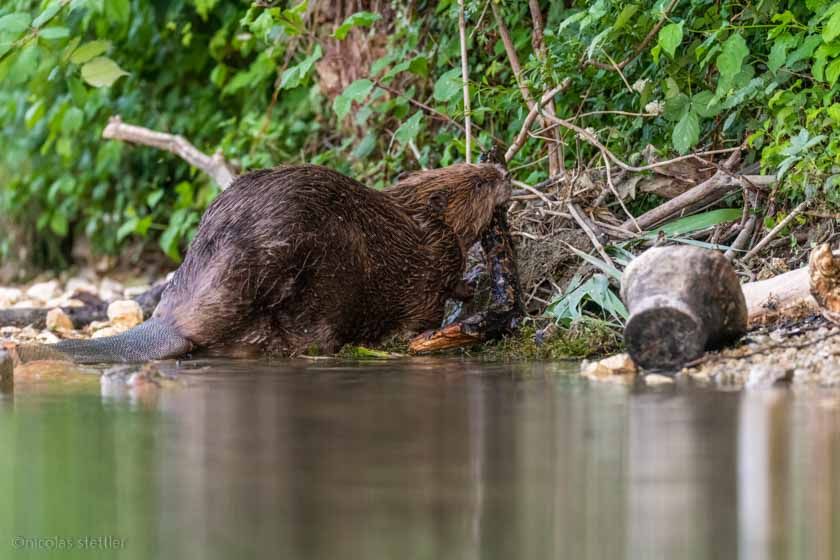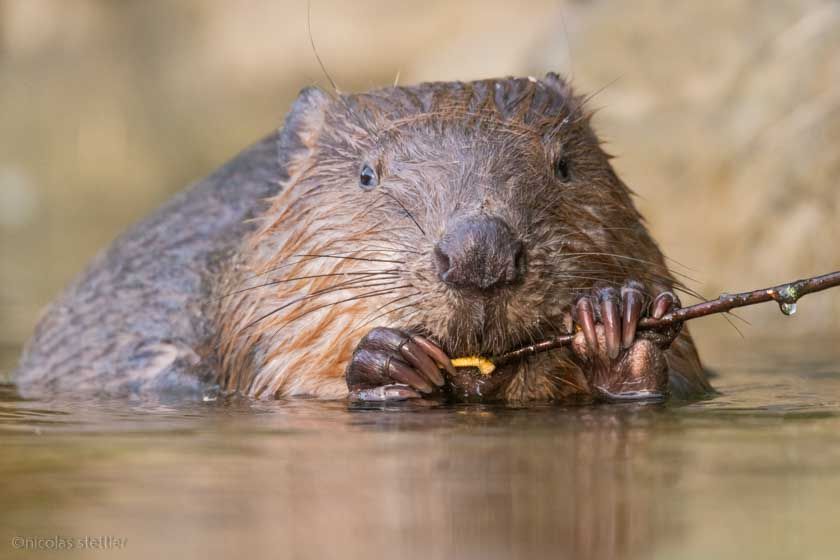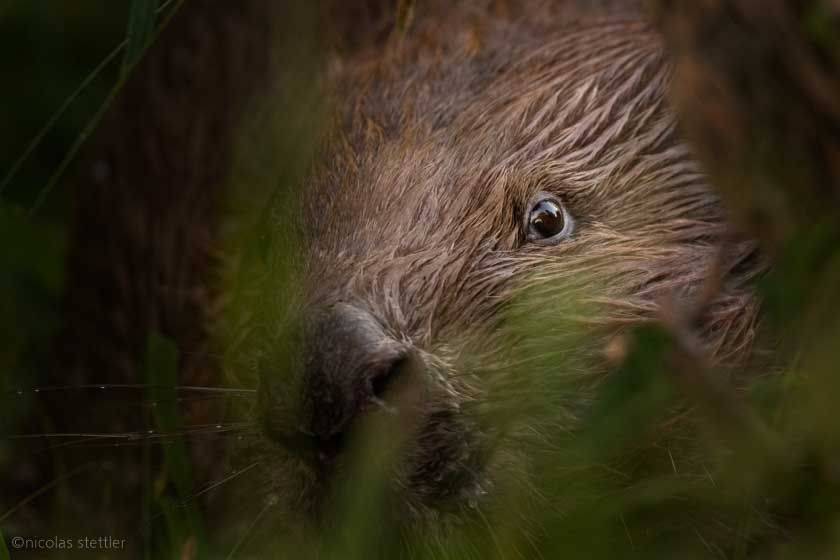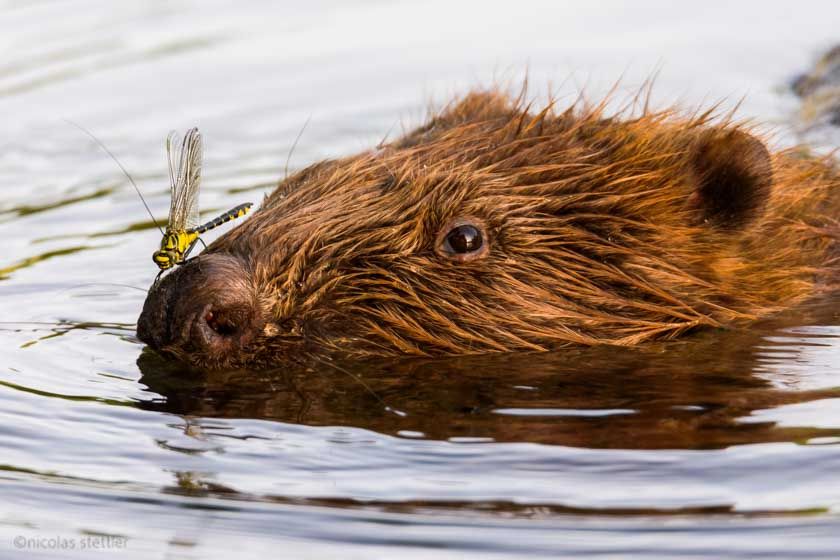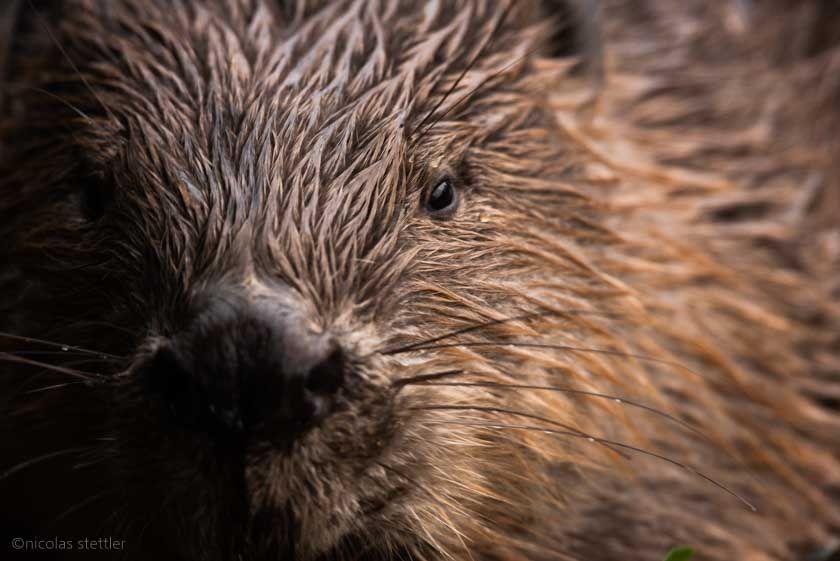Beaver - Architect of the rivers
Since its reintroduction, the beaver became very common sight again in Switzerland. Its tracks prove its presence even in the middle of the settlement areas. But what makes a beaver? And what does its presence mean for the habitat. You can find out all this in this article.
Beaver Anatomy
With a weight of up to 30 kg, beavers are the second largest rodents in the world. Only the capybara from South America is heavier. When beavers swim at the water surface, only their head is visible. The rest of the body is under water and only when the beavers go ashore you can see how big beavers really are. On land, beavers move rather slowly. Every few steps they stop to listen for any threats. But, if needed, beavers can also run quite fast.
Males and females are very difficult to distinguish. There is no difference in size or appearance between the sexes. During the breeding season, the female can be recognized by the clearly visible teats.
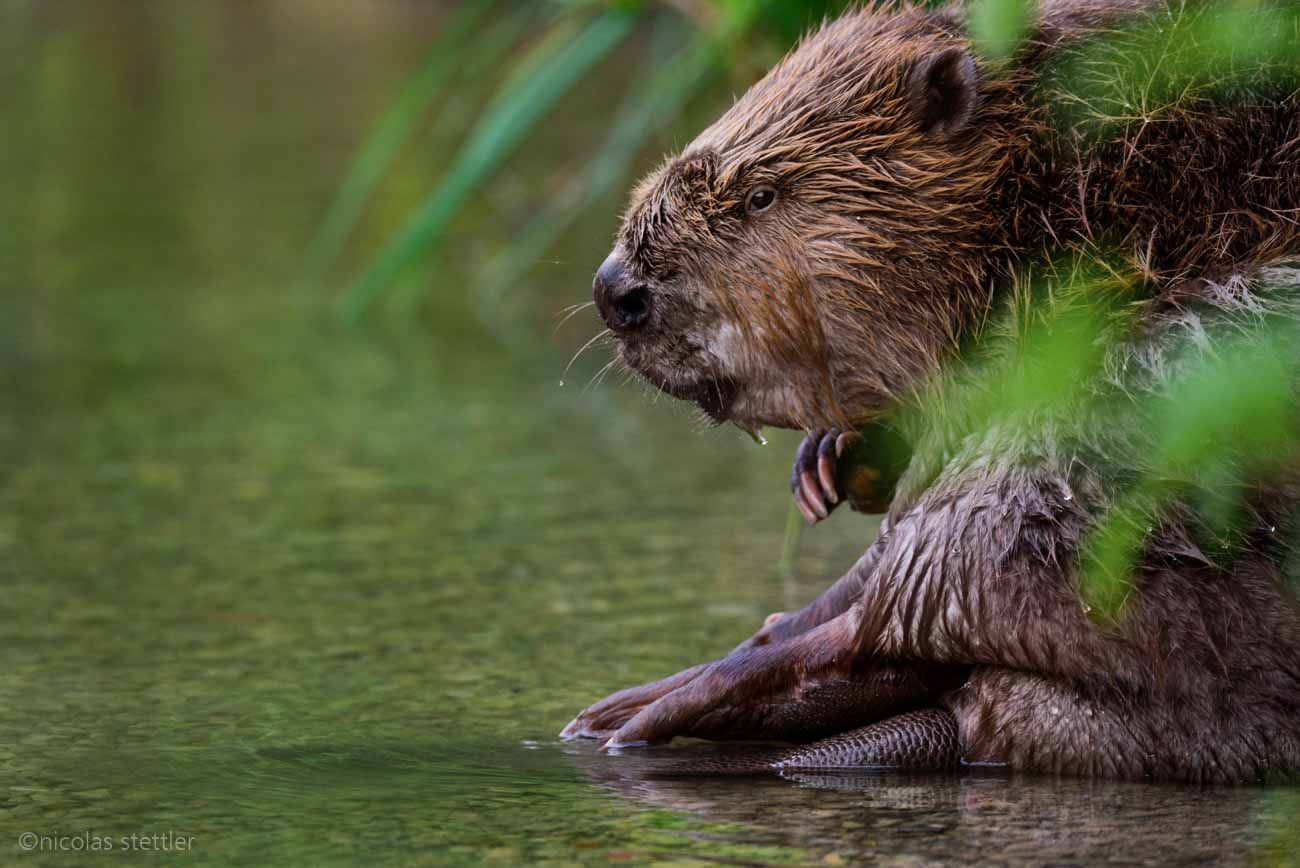
Nose
The beaver's nose is extremely sensitive to detect predators even in complete darkness. The sense of smell also plays a very important role in other areas. For example, beavers mark their territory with a scent called castoreum. This enables foreign beavers to smell at hundreds of metres whether a territory is already occupied.
Teeth
Eyes
Tail
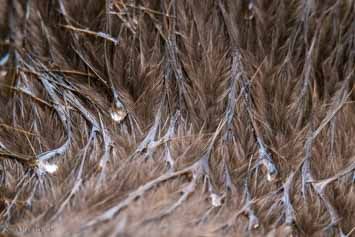
Fur
The fur is extremely dense with 23'000 hair per square centimetre. It is a habitat for a large number of small animals such as fleas and lice. The beaver louse has specialised exclusively in beavers.
Ears
Social behaviour
Beavers live in families. These include, besides the parents, last year's and this year's offspring. In summer, the 2-year-old beavers are being chased away. Shortly afterwards, this year's offspring leave the den for the first time.
The displaced young beavers often stay close to the territory of their parents. Some individuals, however, travel large distances in search of a new territory.
Nutrition
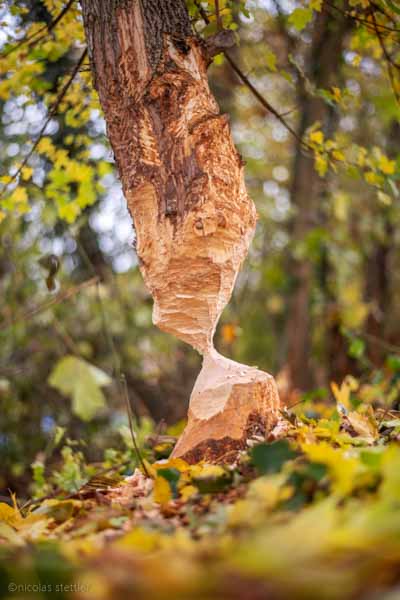
Beavers feed exclusively on plants. In summer, this is mainly composed of leaves, grasses and young branches. The beaver also likes to visit nearby sugar beet fields. I have observed that it also eats apples and even bread.
In autumn the beaver stores branches in front of its den. In case the waters freeze over, the beaver family can feed on the reserve for several weeks. Otherwise, the beaver eats mainly bark in winter. In order to get to this bark, it sometimes cuts down very large trees.
The hard bark is initially transported into the very voluminous appendix. There the bark is decomposed by a large number of bacteria. The resulting pulp is excreted by the beaver and immediately eaten again.
The beaver den
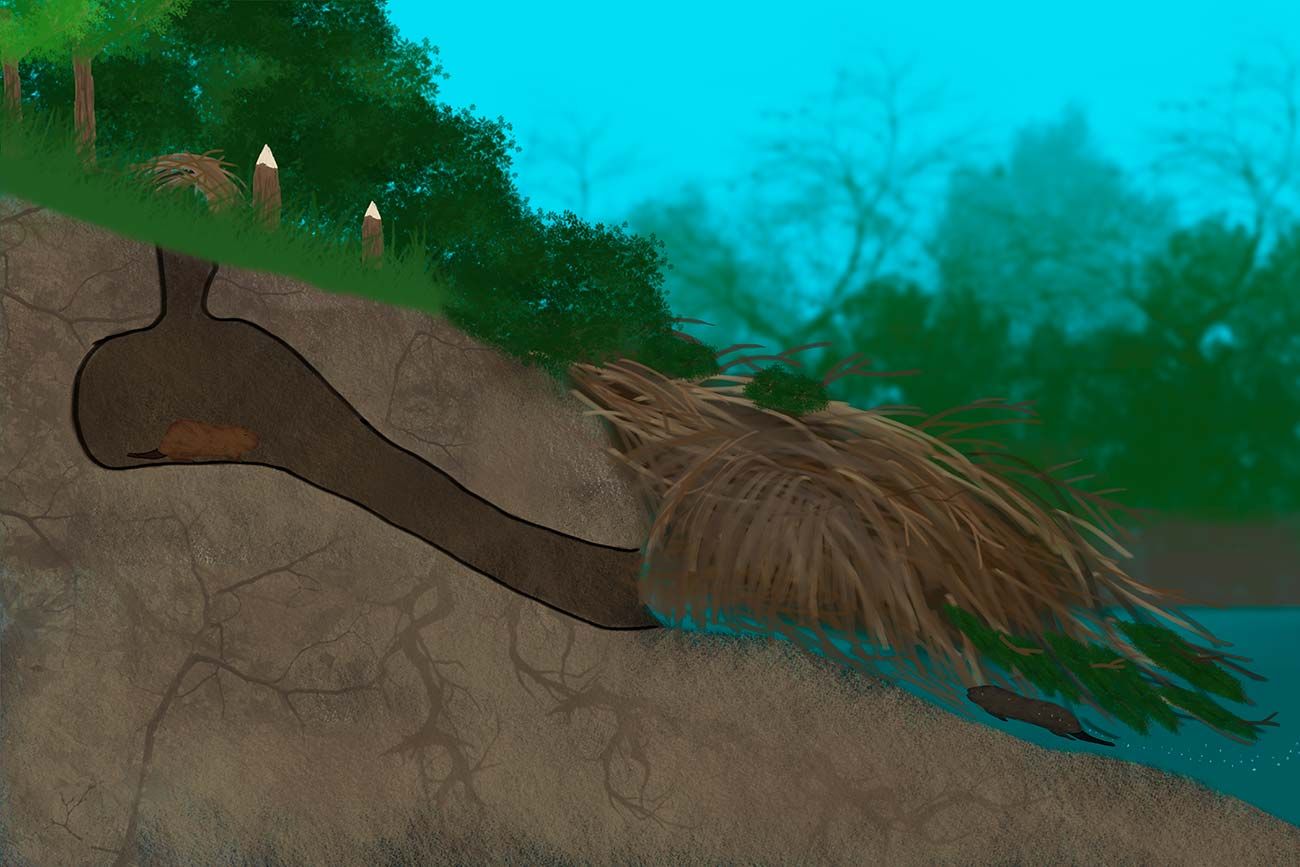
Funnel
Beaver den
Beaver lodge
Winter reserves
In autumn, the beaver builds up a food stock of branches. In addition to the branches, the beaver feeds on the bark of felled trees in winter. However, the beaver does not eat the wood and needs thinner trunks at most for damming up the river course or for building.
The construction of the beaver den can vary depending on its habitat. Especially on steep banks, the typical woodpile is not built at all. Instead, the beaver digs a den in the bank.
However, there are also beaver dens which combine both features. The entrance to the cave is then protected by a woodpile.
By nature, beavers are permanently occupied with the construction and repair of the beaver dam and the beaver den. However, on regulated waters, the structures are almost never damaged. To not get bored, the beavers continue to build more dens. In that case, a beaver family can have several dens. Multiple dens can be inhabited at the same time.
I have observed a beaver family myself, which in the morning disappeared in another den than the one they came out in the evening. In total these beavers had at least 6 different dens.
Architect of the water meadows
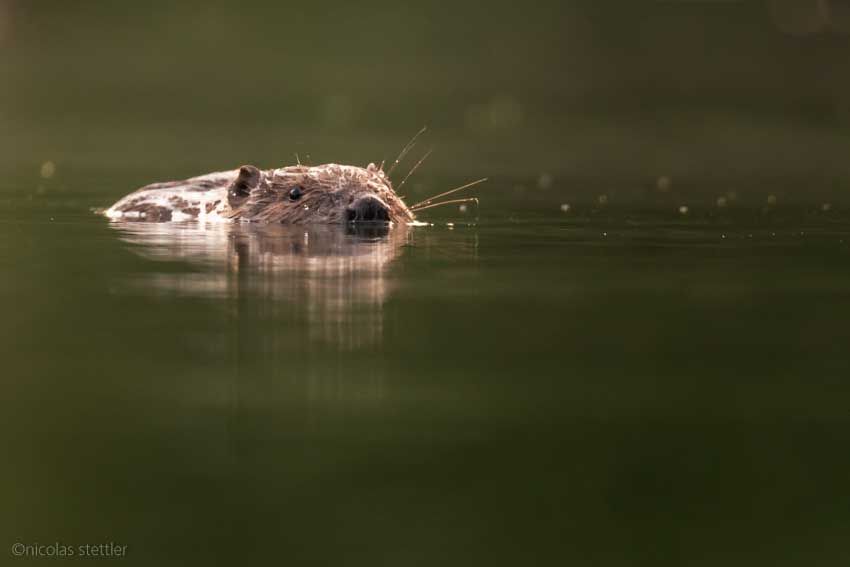
By damming rivers and cutting down trees, the beaver creates a habitat for dozens of other animal species. Insects, fish, amphibians and many other small animals benefit from the newly created river dams. But also birds, such as the kingfisher or the grey heron, like to visit the beaver dam. Especially between the branches of the beaver lodge many small fish hide.
The felled trees serve the kingfisher, various herons and the cormorant as a resting place or lookout. Grebes, like the Great Crested Grebe, like to make their nest on fallen trees and branches.
Beaver in Switzerland
The beaver used to be heavily hunted in Switzerland. The reason for this was the similarity between the beaver and fish. During Lent, only fish but no mammalian meat was allowed to be eaten. Because the beaver was counted among the fish, the Eurasian beaver population fell from 100 million to only 1000 individuals. At the beginning of the 19th century, the beaver was extinct in Switzerland. At the beginning of the 20th century, in the surrounding countries, the population was practically zero.
In Switzerland the first beavers were released in 1956. Since then the beaver population has recovered somewhat. The population in Switzerland is estimated at around 2000 individuals.
Beaver in cities
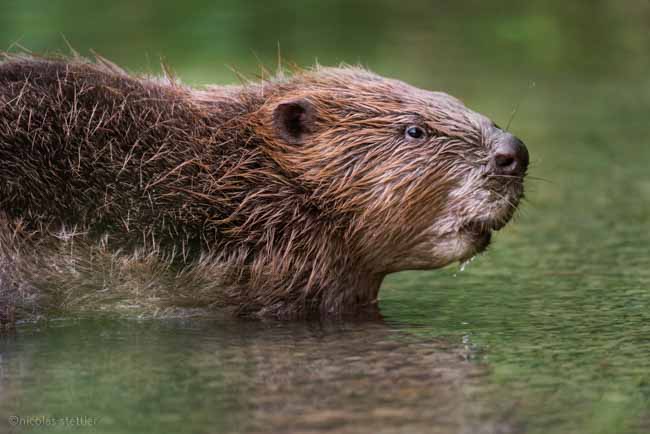
Since its reintroduction the beaver has once again spread widely in Switzerland. In the process it has also reached rivers in the settlement area. Even in the middle of cities, gnawed trees are no longer a rarity.
Because the beavers in Switzerland all originate from abandoned animals, they are not very shy. Especially in settlement areas, the animals have more or less lost their shyness.
With the increase in urban beavers, incidents involving beavers have risen slightly in recent years. Especially against dogs, but also against humans, beavers can defend themselves with their sharp teeth. In cases where people have been bitten, the beavers have always been surprised. In one case, for example, a bather jumped into the water right next to the entrance to a beaver den.
In cases where dogs were injured, the dogs were usually not on a leash. Especially when dogs swim after the beaver, they would have no chance in case of an attack. But in most cases the beaver doesn’t mind and just dives and swims away.
Nevertheless, you should always keep your dog on a leash. When swimming, never swim towards a beaver. Since beavers are very interested animals, they usually do this on their own. The best thing to do is just keep swimming. As long as the beaver recognises you as a human being and does not frighten you, the beaver poses no danger at all.
Photographing and observing beavers
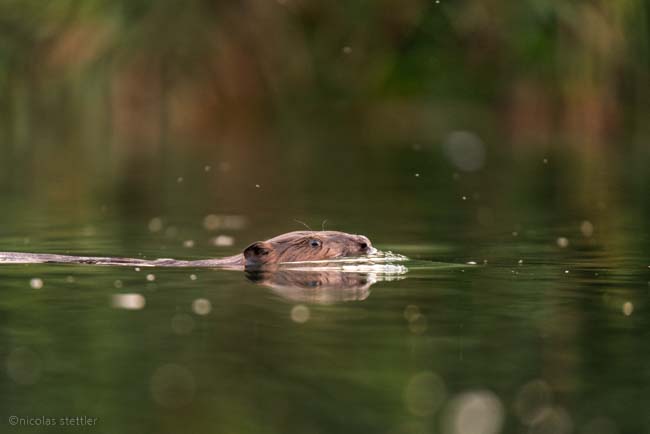
The best time to observe beavers is in summer. This is when the beavers come out of their burrows at dusk. On the countless evenings that I spent in the beaver territory, the beavers came out of their dens from 7 pm in the summer months. Depending on the year and the weather, it was sometimes even 9 pm. Especially in the first weeks after the young ones leave the burrow, the beavers come out of the burrow a little later. But on other days I could observe beavers already at 5 pm. It was an adult animal, which made a tour through its territory every day at 5 pm.
Once the beavers are active in the evening, they are quite easy to observe. If you are very calm, the beavers will sometimes come very close to you.
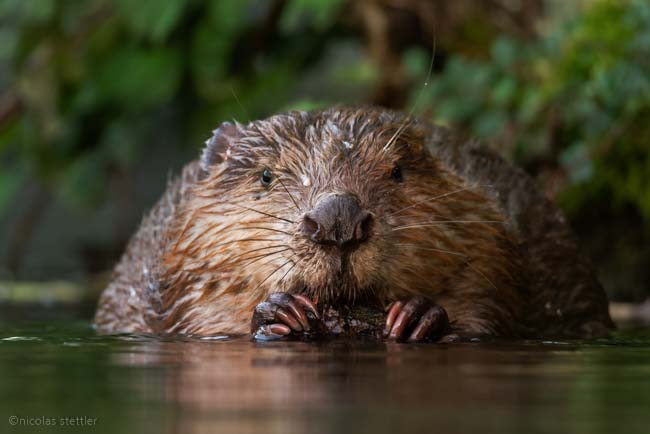
If you want to take pictures of beavers, I recommend you to be as close as possible to the beaver. You can read why you should try this in a previous blog article of mine. There I write about the effect of a low camera position.
For photography, you should never use a flash. First of all, it unnecessarily stresses the beavers and if it is a little darker, it can damage their eyes.
You might also find interesting:
Bird Photography - Create impressive images
Photographing birds can be very difficult. In this article you will learn how to create impressive and unique pictures of birds. I explain what you should pay attention to when taking pictures and where you can find birds that you can easily photograph. Learn from my tips and tricks, which I myself have learned in the last years while photographing.
The 11 most common ducks in Switzerland
Many ducks overwinter here in Switzerland. But how can you identify them. In this article, I'll talk about the most common ducks in Switzerland. You'll learn where they live and how you can identify them.


